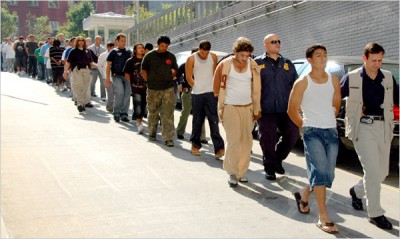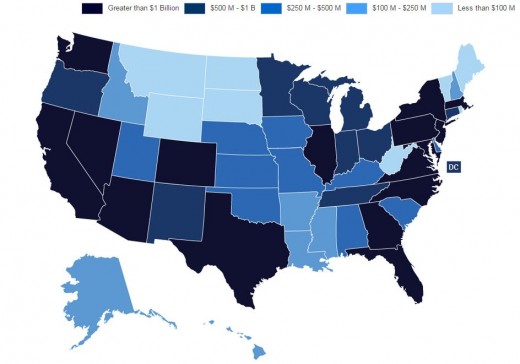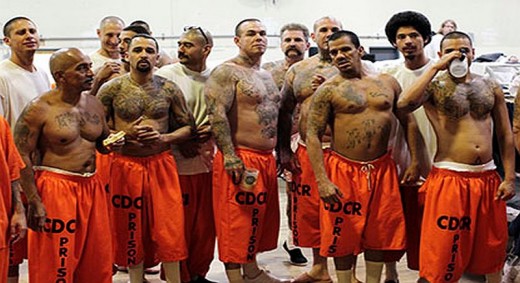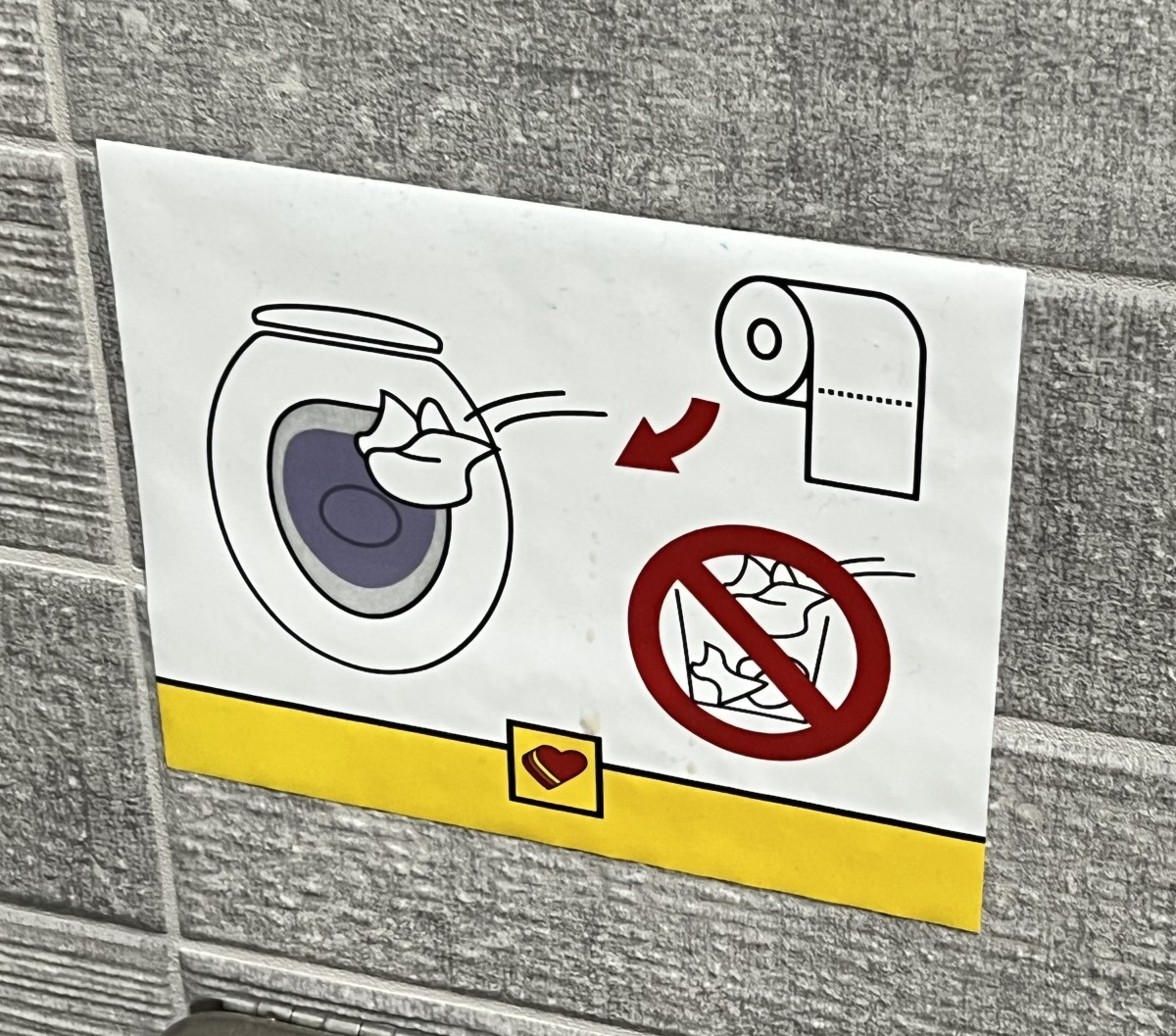Illegal Immigration by the Numbers

Many Americans have already chosen a side on the subject of closing the border between Mexico and the United States. Putting politics aside and focusing only on America as a sovereign nation, the number of reasons in favor of such an action far outweighs those against it. The main topics to consider are economic implications, health related issues, crime and illegal activities, and social considerations. Any issue that isn’t clearly identified by the major topics will be reviewed in the social consideration portion of the document. Because it’s such a hot topic, a serious factual discussion is necessary to look at how it staying open or being closed will affect this nation in the future.

Economic
The annual cost of illegal immigrants costs America over $113 billion dollars per year at the Federal, State, and local levels, with the bulk of the cost, $84 billion, being absorbed at the State level. That equates to over $1,100.00 per household each year. The single largest cost comes in the form of education, which is over $50 billion dollars per year. Since most illegal aliens do not pay income taxes this money is unrecoverable. The illegal aliens that do file taxes usually qualify for subsidies such as the Earned Income Credit which results in additional payments to them. Illegal immigration is a net drain on the American economy. There are businesses which exploit these illegals to reap high profit margins with little concern to the workers. Illegal aliens are subject to very dangerous working conditions, face routine threats of exposure or physical violence, and have no protections under US labor laws. Multiple stories are heard about illegal aliens being hired to do a big job only to find that when the work is done they meet ICE agents instead of receiving a paycheck. This repeated exploitation often leads to retaliation by illegals in the form of arson or robbery, but usually just with them moving along to find work somewhere else.
In 2015 it was estimated that more than 11 million illegal aliens were living and working within the US borders and there have been reports of this collective group contributing $11 billion in paid state and local taxes each year, yet much of this comes from sales taxes and other property taxes that are part of rental agreements and leases. These numbers are often used by pro-amnesty groups to show that by giving this block amnesty that it would actually add billions of dollars to the tax base. Yet, mathematically the cost of this group still would be a burden even with amnesty. Also, if amnesty is given, this block would be eligible to collect Social Security benefits, social services such as EBT and welfare, and other programs intended for lower income citizens, thus adding an unmeasurable amount of expense on a system which is already overburdened. Also these illegal immigrants would qualify for unemployment and worker’s compensation benefits.
In 2013, it was estimated that illegal aliens sent $21.6 billion dollars in cash from the United States to Mexico. This figure comes from the Bank of Mexico which documented 74 million such transactions that year with the average remittance being $292 US dollars. Remittances, such as Western Union Money-grams from the United States represent the second largest source of income for Mexico following the Mexican oil industry. This huge financial dependence on American businesses as an economic consideration is the chief reason why Mexican officials won’t work with American officials to curtail illegal border crossings. The Mexican economy is dependent on this influx of cash, especially since most of it gets spent instead of invested. When large amounts of cash are removed from the economy, it contributes to driving up interest rates, unlike when cash is deposited into savings accounts which allows for loans and investment. The amount of cash available is less, thus the cost of borrowing increases which slows investment and contributes to recessionary periods or downturns in the economy.
The most favorable analysis concedes that the economic benefits of the illegal immigrant to the citizen population are exceedingly small: about 0.2 percent of GDP. This computation is frequently cited and endorsed by the Obama administration and has no political bearing on this narrative. In return for those relatively meager economic benefits, the United States shoulders many serious costs, including crime, health-related issues, and more.


Health and Disease
Legal immigration has a process in the United States, part of which is a health screening to check for contagious diseases, drug addiction, sexually transmitted diseases, and other things which could be considered a health risk to the general population of the country. Illegal immigrants do not undergo the rigorous checks and can easily bring diseases that our country has virtually eradicated back to unacceptable levels. Some of the most concerning issues are tuberculosis, which shows nearly double the rate along the border as anywhere else in America. Also leprosy and dysentery are both reported in high levels. Once these illegal aliens cross the US border unchecked, they can spread communicable diseases at an alarmingly fast rate to other citizens in other cities. The four greatest illegal migrant states also have the highest tuberculosis levels attributed to non-citizens in the nation; Hawaii, California, Washington, and New York. Illegal immigrants who find work in food processing, construction, or service industries have been identified as passing bacterial and viral infections leading to tapeworms, malaria, and other third-world types of problems.
In 2014 10 to 25 percent of illegal immigrants coming to the U.S. have scabies, which is a highly contagious skin condition with intense itching and a rash because of a mite. Dangue fever is being identified along the Texas border. Many illegals have not been vaccinated which adds to the concern. The Center for Disease Control and the Department of Health and Human Services are careful to stay tight lipped on the matter or to give a generic answer, yet medical experts are saying that HIV, measles, pertussis, rubella, rabies, hepatitis A, influenza, tuberculosis, shigellosis, syphilis, Mycobacterium bovis infection, brucellosis, and foodborne diseases, such as infections associated with raw cheese and produce are all evident in illegal migrants and some in high levels. Our healthcare system doesn’t have the capacity to deal with all of these issues.
Illegal immigrants have no health insurance and practice poor overall hygiene. Coming from Mexico where an antiquated sewer system requires them to deposit used toilet tissue into trash cans, water is untreated and filled with microbes, and health care is poor, these illegals come to America and continue living in those same conditions. With 10 million illegal aliens practicing poor sanitation and hygiene at home plus no access to health care, the problems will only fester. American emergency rooms are filled with illegal aliens because they do not practice preventative care; illegal alien use of emergency rooms is 30% compared to the average citizen usage at 11%. One of the most frequent uses is to deliver babies, often anchor babies. A California study which was done in 1994 calculated the annual figure of anchor babies born at 74,987, at a cost of $215 million. At that time, those births constituted 36 percent of all Medi-Cal births, and they have grown now to substantially more than half or the annual Medi-Cal budget.


Crime & Illegal Activites
Many American citizens are suffering from pain inflicted upon them or their families at the hands of illegal aliens. In 2014, 315,943 illegal alien convicted criminals were deported from the United States, while the rest of the illegal population remains at large. 85 percent of those deported had previously been convicted of a criminal offense. In 2014, ICE released onto U.S. streets another 30,558 criminal illegal immigrants with a combined 79,059 criminal convictions including 86 homicides, 186 kidnappings, and thousands of sexual assaults, domestic violence assaults and DUIs. There are 351,000 inmates in State’s and Federal prisons who are not citizens; that figure represents 5% of the total prison population. In the states which have high populations of illegal aliens, we see very high crime statistics. In Florida, over 40% of all murder convictions are criminal aliens, while in New York its 34%, and in Arizona 18%. Yet, ICE continues to let these criminal aliens run free while awaiting deportation.
The Federal, States, and local governments go to great lengths to keep illegal alien crime statistics hidden from the general public, especially when it identifies that illegals are three times as likely to be convicted of murder as the general population and proportionately account for much more of the nation’s crime than their population numbers. Lately several very high profile cases of murder involving illegal aliens who had previously been deported has given government in general a black eye. There are approximately 2 million illegal aliens with criminal convictions either behind bars or roaming free within our borders. Twenty percent of all kidnapping sentences are handed out to illegal aliens as are 16 percent of the drug trafficking ones. Each year nearly 1 million criminal illegal aliens are arrested.
When American elites debate immigration, they mostly ignore these horrendous crime statistics and instead debate its economic impact. Yet, under different immigration rules, and a different enforcement regimen, American citizens like Kathryn Steinle, Jamiel Shaw, Peggy Kostelnick, Shane Oxendine and his parents Mary and Jamie, Police Deputy Michael Davis, and Deputy Sheriff Dan Oliver would still be alive. Under different immigration rules, many thousands of other crimes would have been prevented. Under different immigration rules, the average U.S. crime rate would be lower than it is today—and probably considerably lower than it will be in future.


Social Considerations
Illegal alien crime and sanctuary cities seem to be mentioned together quite often and rightly so. Yes, there are cities and towns that go out of their way to insure illegal aliens are not caught, prosecuted, or deported. This activity has contributed to thousands of crimes against life and property, crimes which should never have been committed in the first place. In addition to the crime, the social impact illegal aliens have is devastating to America. There have also been many concerns raised regarding the strain of funding the public education of illegal immigrant children. Our school systems are overwhelmed with illegal alien students who come to America undereducated and unable to speak English. There are schools that have dozens of languages being spoken daily and multitudes of translators on staff just to make it through the day. American citizen students are losing valuable time with teachers as they struggle with the language bottleneck of the illegals.
Illegal aliens are driving on our roads and highways, many without auto insurance or a driver’s license. This is an area where states are getting more involved by offering them driver’s training, but in reality it only serves to validate them breaking our laws.

Conclusion
The immediate reaction from advocates of immigration is to use statistics drawn from the ranks of legal immigrants. These people, who were vetted and followed the rules and time table to achieve citizenship, those who learned to speak English, and had a genuine interest in become part of America are not part of this discussion.
After looking at the comprehensive data, the facts identify that illegal immigration is a major issue throughout the United States. Certainly someone is giving them employment based on the amount of money being sent to Mexico. California has more illegals than any state and 38% of them are employed in the agricultural industry and 14% in construction. Many also work in restaurants, hotels, or as domestic housekeepers or servants. So as long as jobs are available, illegals will keep coming unless something changes to stop them. Can America afford to lose all the illegals working in the nation? Can we create a program that encourages self-deportation? What is the right answer to dealing with people who clearly have broken American law? The facts overwhelming support stopping the flow of illegal aliens from coming into the country; either through militarizing the southern border or building a border wall plus enforcing the law and punishing anyone harboring illegals.
Summary
For the life of me, I cannot understand why America allows our leaders to ignore this pressing issue - it's no longer something we can avoid.








